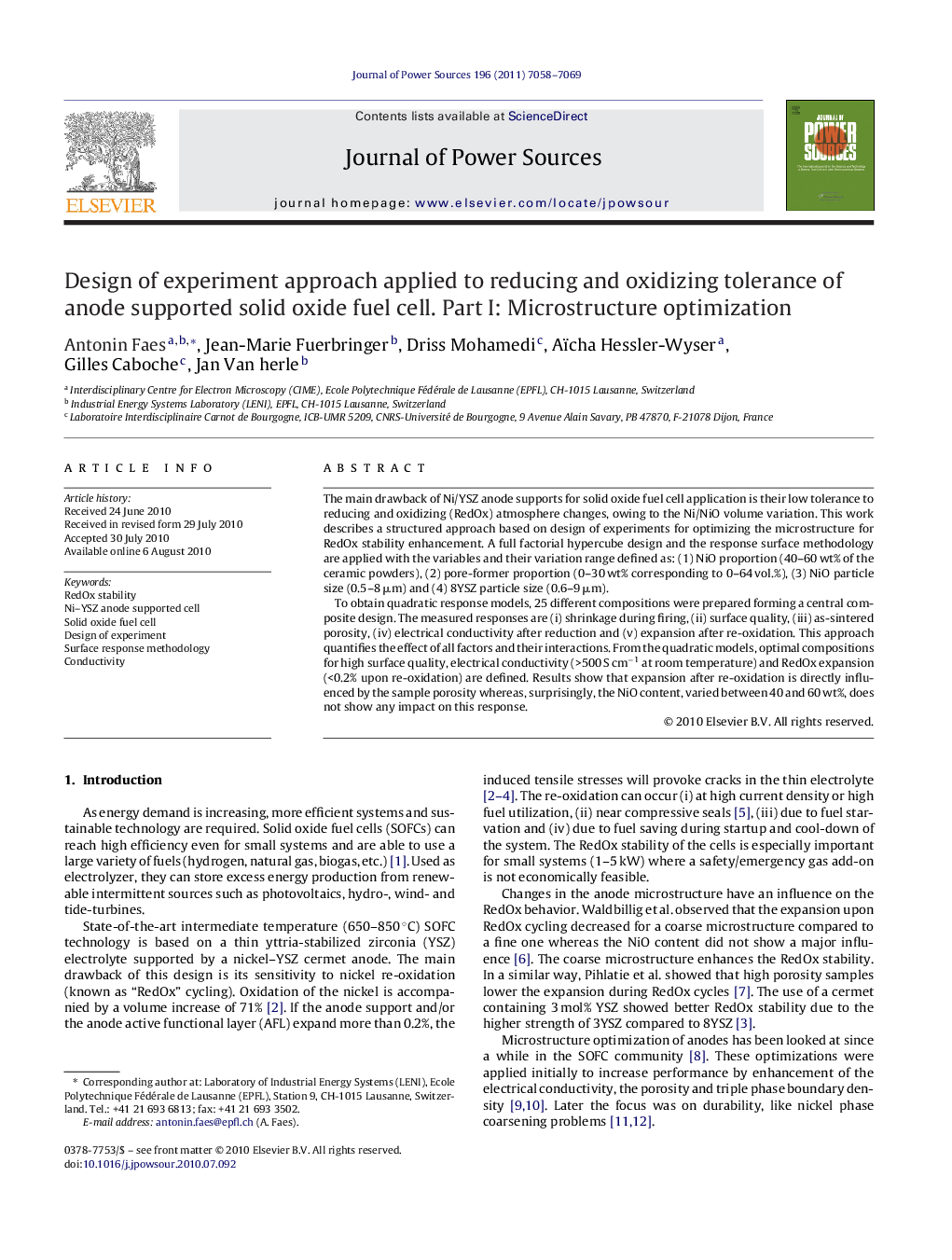| Article ID | Journal | Published Year | Pages | File Type |
|---|---|---|---|---|
| 1288485 | Journal of Power Sources | 2011 | 12 Pages |
The main drawback of Ni/YSZ anode supports for solid oxide fuel cell application is their low tolerance to reducing and oxidizing (RedOx) atmosphere changes, owing to the Ni/NiO volume variation. This work describes a structured approach based on design of experiments for optimizing the microstructure for RedOx stability enhancement. A full factorial hypercube design and the response surface methodology are applied with the variables and their variation range defined as: (1) NiO proportion (40–60 wt% of the ceramic powders), (2) pore-former proportion (0–30 wt% corresponding to 0–64 vol.%), (3) NiO particle size (0.5–8 μm) and (4) 8YSZ particle size (0.6–9 μm).To obtain quadratic response models, 25 different compositions were prepared forming a central composite design. The measured responses are (i) shrinkage during firing, (ii) surface quality, (iii) as-sintered porosity, (iv) electrical conductivity after reduction and (v) expansion after re-oxidation. This approach quantifies the effect of all factors and their interactions. From the quadratic models, optimal compositions for high surface quality, electrical conductivity (>500 S cm−1 at room temperature) and RedOx expansion (<0.2% upon re-oxidation) are defined. Results show that expansion after re-oxidation is directly influenced by the sample porosity whereas, surprisingly, the NiO content, varied between 40 and 60 wt%, does not show any impact on this response.
